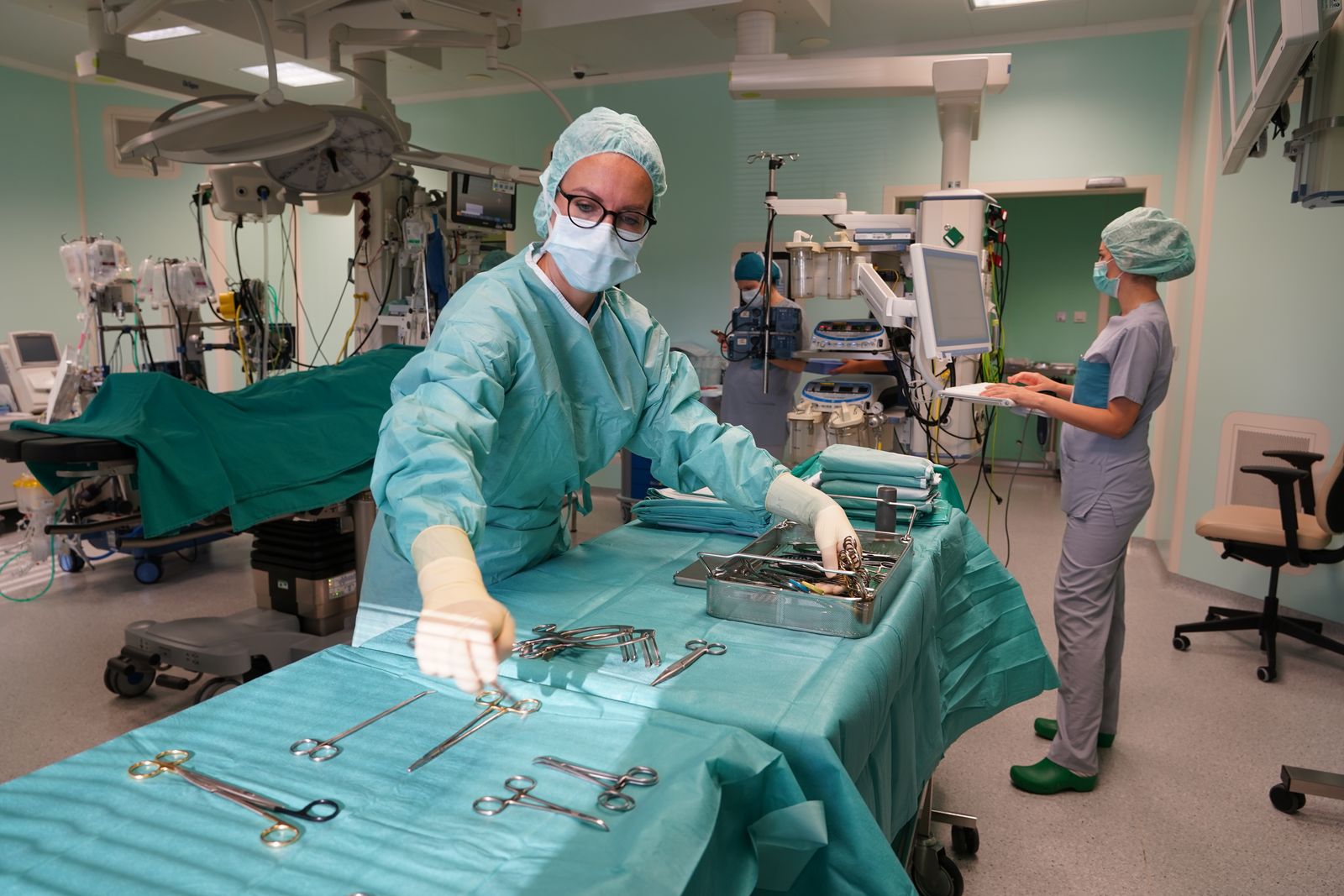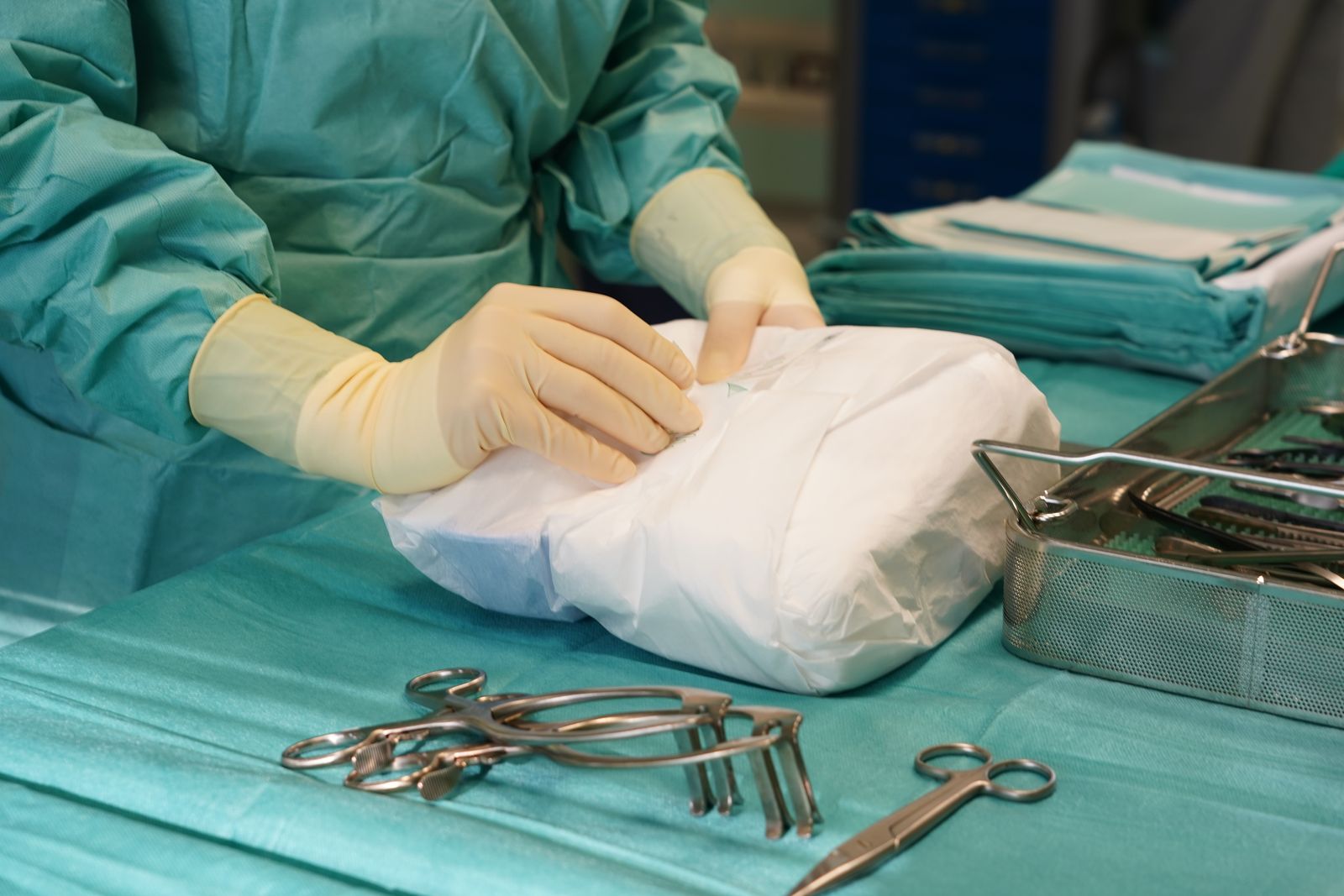 00389 2 3091 484
00389 2 3091 484
Medical Services
Thoracic surgery
Surgery of chest deformities
PEXTUS EXCAVATUM is a congenital anomaly of the anterior side of the chest. This defect occurs in one in between 500 to 1000 children. It is most common in male children with hereditary factor, in families with such cases. The defects manifests immediately after birth, and it is especially emphasized in the puberty.
In milder clinical cases, certain orthopedic devices and physical activity lead to improvement of the deformity but there are deformities that can be resolved only surgically.
In the detailed investigation and assessment of the pextus deformity it is necessary to perform the following investigations:
- Native computer image – in order to objectivize the compressive effect on the lungs
- Spirometry – assessment of the functional disorder of the lungs.
- Echocardiographic investigation – assessment of the compressive effect on the right ventricle and right atrium of the heart from the depressed frontal part of the sternum.
Surgical procedure for repairing a chest defect
There are several surgical techniques for correction of the chest, including the minimally invasive Donald Nuss procedure used in the Zan Mitrev Clinical Hospital.
This procedure, metal bars are inserted into the chest from one side of the chest to the other in the height of the deformity and the chest is lifted by turning of the rods which corrects the deformity.
After the surgical repair of the defect, the young body functions are returned to normal, and the child is able to perform all the physical activities. The surgery lasts up to one hour with hospitalization of one to two days, and the patients can return to their normal life one week after the surgical treatment of the chest.

Lung and mediastinum surgery
The lungs are responsible for the exchange of gases, i.e. oxygenizing of the blood which is then distributed to the entire body, and elimination of the carbon dioxide from the blood outside the body.
With day-to-day inhaling, the lungs are exposed to bacteria and viruses, allergens and toxic maters from the air which can be potential causes for lung diseases.
Lung diseases diagnostics
In order to diagnose and evaluate the conditions, several types of tests are used to establish the best treatment solution.
Pulmonary functional tests
- Spirometry
- Lung volume tests
- Diffusion (expansion of the lungs) tests and pulse oximetry
Imaging tests
- Chest X-ray
- Computer tomography
- Magnetic resonance
Visualization and biopsy tests
- Bronchoscopy
- Mediastinoscopy
- Thin needle biopsy
- Core biopsy
Surgery
Lung surgery is performed in patients with lung diseases that need surgical treatment. The surgery can be performed using video assisted thoracoscopy or thoracotomy. Depending on the disease, there are several types of surgeries, such as:
Lobectomy
- Lobectomy is a surgical procedure to remove one lung lobe which is affected by carcinoma. In case both lobes are removed, the procedure is called bilobectomy.
- A possible option is Sleeve – lobectomy which is a surgical procedure which in addition to the removal of a lobe, removes a part of the bronchus.
Pneumonectomy
Pneumonectomy is a surgical procedure for removal of an entire lung.
Wedge resection
It is a surgical procedure to remove small, well delineated area of the lungs that contains carcinoma, together with healthy surrounding tissue.
Segmentectomy
It is a surgical procedure to remove a small portion of the lobe, segment/part of the lungs, retaining most of the lobe.

Thyroid gland surgery
In order to make an appropriate diagnosis and treat the changes of the thyroid gland, it is necessary to cooperate with endocrinologist, pathophysiologist and radiologist.
Echo examination – method that provides information about the location, morphology and intensity of the changes and of course, a possibility for real time biopsy. A more recent ultrasound method is elastosonography which, using a light pressure, provides a painting scale of the changes that can help us to differentiate the changes that have to be biopsied and changes that have to be monitored.
Biopsy – each change with irregular contours, larger than 1cm, with cystic fields and calcification is recommended to be diagnosed using biopsy. The procedure is performed in real time under ultrasonographic control using 18 to 22 G needle. It is necessary to prepare the patient with antibiotic therapy and before the procedure itself, local anesthesia is applied to avoid pain.
Thyroidectomy – surgical treatment of thyroid gland
Each identified change of the thyroid gland that changes the level of thyroid hormones in the blood required further treatment in consultation with endocrinologist and pathophysiologist. In case an interventional – surgical procedure is needed; it is necessary to consult a thoracic surgeon. Thyroidectomy is a surgical procedure to remove the entire or only a part of the thyroid gland.

Breast surgery
Breasts are susceptible to numerous benign and malignant conditions. The most common breast diseases include:
- Mastitis
- Fibrocystic changes of the breast
- Fibroadenoma
- Intraductal papilloma
- Breast cancer
- Gynecomastia
Most common symptoms and signs that indicate breast disease include:
- Changes in the breast tissue i.e. lumps
- Changes in the size or shape of one or both breasts
- Discharge from nipples
- Lumps or swealing under the armpits
- Redness and itching on or around the nipple
- Nipple retraction
Diagnostic procedures
The early diagnostic of the breast diseases improves the results of the treatment of the disease.
- Physical examination
- Breast ultrasound
- Mammography
- Magnetic resonance
- Biopsy
- Nipple swab (in case of discharge)
Treatment of breast diseases
Depending on the disease, it can be treated with nonsurgical and surgical methods. Depending on the pathological process, the surgical treatment can be radical (breast removal, removal of the surrounding lymph nodes) or less radical – tumorectomy (removal only of the tumorous mass with preservation of the breast)
- Simplex mastectomy to remove only the breast
- Radical mastectomy to remove the entire breast including lymph nodes under the armpit
- Quadrantectomy to remove only a portion of the breast where the cancer is localized including the lymph nodes under the armpit.
In the case of benign diseases, tumorectomy is performed to only remove the change.
We also perform subcutaneous mastectomies with simultaneous implantation of implants in cooperation with a plastic surgeon.
Aesthetic breast surgery
The reasons that can lead to surgical reduction or enlargement of breasts are due to aesthetic or medical conditions. It includes breast reduction and corrective breast surgery with implants.

Other doctor’s from this department

Liljana Brajevikj MD
Specialist in general surgery
Subspec. in thoracic surgery
liljana.brajevikj@zmc.mk

